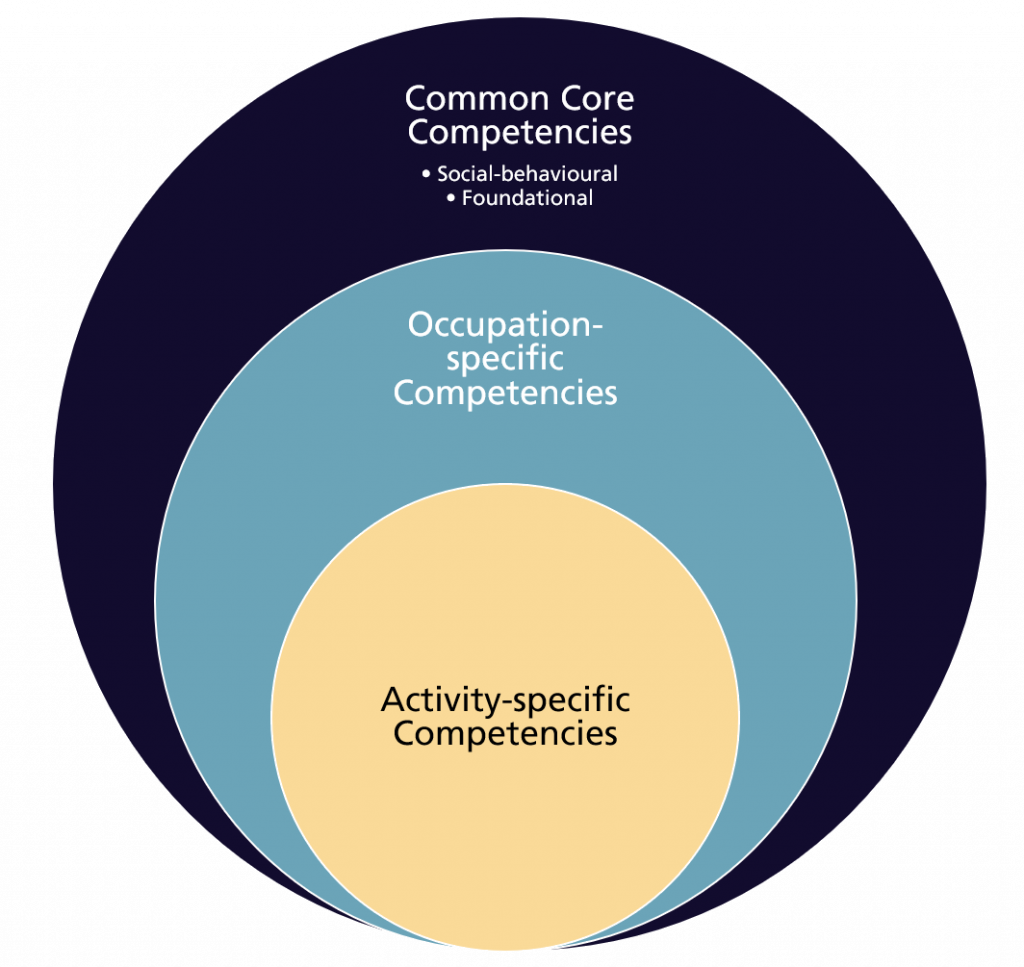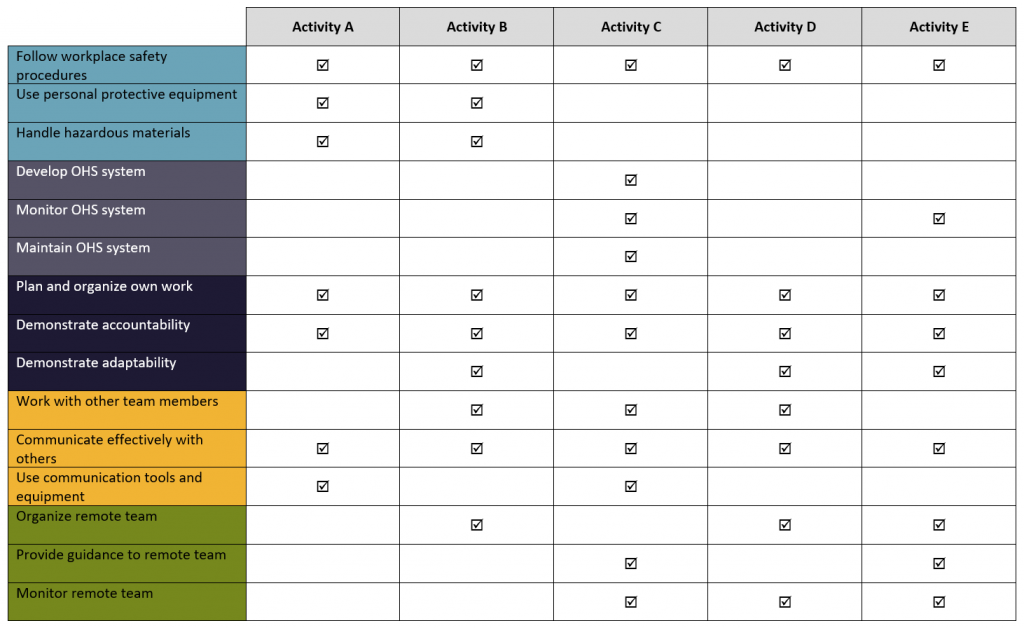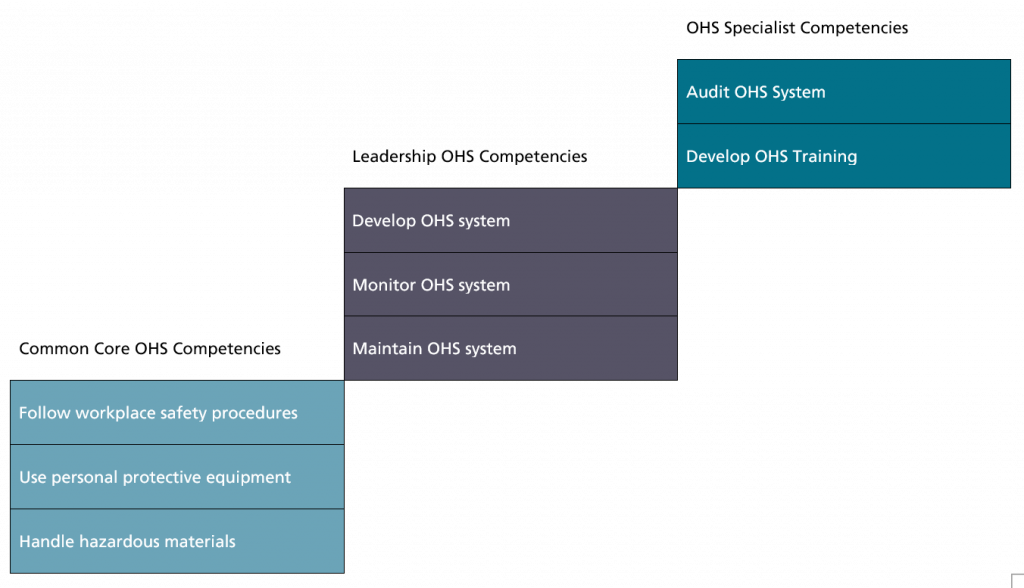20 Sample competency framework structures
Competency framework structures can vary from the very simple to the extremely complex. There is no one way to create a competency framework structure; however, there are better structures than others depending on the intended use. When developing the framework structure, it’s important to consider the purpose and the users of the framework. Does the framework need to be simple in structure for people to use and/or understand? Or do you need to develop a more complex structure to fulfill all the requirements of the intended uses?
Information Hierarchies or Taxonomies
Managing information, especially a lot of complex information is critical to making a competency framework useful. Most frameworks will have a defining structure or taxonomy that organizes competencies (and other information as well) from broad groupings into more and more specific groupings. Depending on the framework there may be multiple taxonomies, each with its own purpose. At a minimum, individual competencies should be grouped in a logical manner, and in a way that makes the information easy to find and organize.
Examples of Taxonomies:
Competencies sorted into categories using a structured taxonomy:
- General Area of Competency (GAC) – The broadest category of grouping within the framework. There should be a limited number of GACs within a framework. If there are more than 10, can any of them be grouped differently?
- Specific Areas of Competency (SAC) – Each GAC may have a smaller number of specific areas of competency within it.
- In a large framework there may also be small gradations (i.e. more specific areas of competency or “sets” of competencies).
- Competencies – Each SAC will have a limited number of competencies. Each competency will contain both a competency statement and supporting information, such as performance criteria
- In a large framework there may also be small gradations (i.e. more specific areas of competency or “sets” of competencies).
- Specific Areas of Competency (SAC) – Each GAC may have a smaller number of specific areas of competency within it.
Specific Example (Culinary Arts Framework)
- Safety and Sanitation (GAC)
- OHS Competencies (SAC)
- Workplace Safety (Set)
- Use Personal Protective Equipment (Competency)
- Workplace Safety (Set)
- OHS Competencies (SAC)
Typically, each of the groupings should be logical and manageable. 3-5 competencies in a specific area of competency, and 3-5 SACs in a GAC are a good rule of thumb. If you only have 1 or 2 , then look at how these might be combined with other groupings. If you have 6 or more, consider how they might be divided.
Another way that taxonomies are found in a framework are those organized by work activity or job role/position. Similarly, these may have sub structures.
Taxonomy Example |
Specific Example |
By work activity
|
Carpentry
|
By occupation
|
Medical Occupations
|
By organization
|
Large Organization
|
Common Core Competencies
Many frameworks have a set of common core competencies (they might also be referred to as ‘foundational’ competencies) that might apply to a broad range of occupations, job roles, or activities. These often include things like Health and Safety or Interpersonal Skills and may be coupled with requirements for on-boarding or pre-employment training, or tie into well-defined sets of employability skills or essential skills.
Some common core competencies may not be tied to specific occupations or activities. These competencies typically describe attitudes and values that must be used when undertaking any activity. Some people refer to these competencies as social-behavioural; for example, competencies that require a person to conduct activities with a specified attitude. These would be considered overarching to the rest of the occupation-specific or activity-specific competencies.

Competency and Work Activity Matrices
For many frameworks, particularly those linked to occupational performance, there is a need to provide a distinction between the work activities being performed and the competencies that support them. For these, there tends to be a matrix approach where the activities (and tasks that are required to complete the activities) are cross-referenced to a set of competencies. Within this type of structure, the competencies may also have their own hierarchy and groupings. In a framework that contains such a structure, assessments and learning are often aligned with the activities, as opposed to the competencies. Mapping the competencies to the activities will help you identify logical groupings that will help build your competency framework.

Competency layers/scaffolding
Within a group of competencies, there may be relationships that structure some competencies as more advanced, or requiring other competencies as prerequisites. For example, many leadership or supervisory competencies build on foundational competencies or those required for a certain activity. In this example, one must have all of the workplace safety competencies in order to manage the OHS system for the workplace. There may even be additional more advance competencies that only relate to OHS specialists, such as auditing and developing training.

Sample Frameworks
Here are some examples of existing frameworks that use some or all of these structures.
ESDC Skills and Competencies Taxonomy
Essential Competencies for Midwifery Practice
Toronto Region Immigrant Employment Council’s Inclusive Workplace Competencies
IT Professionalism Europe’s e-CF Explorer
European Skills/Competences, qualifications, and Occupations (ESCO)
A classification into ordered categories. In competency frameworks, it usually refers to information categorized and arranged in several, increasingly specific levels.

